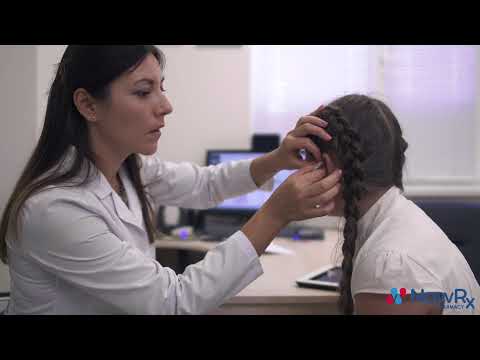The Job of a Medical Assistant
Contents [show]
Medical assistants are vital members of the healthcare team. They perform a variety of tasks to keep the office running smoothly and the patients care on track. If you’re thinking of becoming a medical assistant here’s what you need to know about the job.
Checkout this video:
The Job of a Medical Assistant
Medical assistants are a vital part of any medical team, providing support to doctors, nurses and other members of staff. They perform a wide range of tasks, from administrative duties such as scheduling appointments and maintaining medical records to more clinical tasks such as taking patient vital signs and assisting with procedures.
Medical assistants must have excellent communication and organizational skills, as well as the ability to work well under pressure. They must also be able to maintain confidentiality and show empathy and compassion towards patients. In some states, medical assistants may be required to have a certification or diploma in order to practice.
The Duties of a Medical Assistant
A medical assistant is a multi-skilled professional who works in a medical office or clinic. The duties of a medical assistant vary from office to office, but there are some duties that are common to most practices.
The most common duty of a medical assistant is to take patients’ vital signs. This includes taking their temperature, pulse, blood pressure, and respiratory rate. Medical assistants also collect patients’ health histories and update their records. They may also be responsible for scheduling appointments and laboratory tests, and handling billing and insurance paperwork.
The Education of a Medical Assistant
The education of a medical assistant is a key factor in getting a job in this profession. Medical assistants must be able to show that they have the knowledge and skills necessary to perform their duties. There are many ways to get the education needed to become a medical assistant.
Some medical assistants choose to get their education through a formal training program at a community college or technical school. These programs typically last one or two years and result in a certificate or diploma. Many of these programs are accredited by the Commission on Accreditation of Allied Health Education Programs (CAAHEP).
Other medical assistants may choose to get their education through on-the-job training, which can take several months or more. In some cases, employers may prefer candidates who have completed a formal training program. Some states have certification requirements for medical assistants, and completing a training program can help candidates meet these requirements.
Candidates who complete a formal training program will learn about topics such as anatomy and physiology, Medical Terminology patient care, and office procedures. They will also gain hands-on experience through externships or internships. upon completion of their program, medical assistants will be prepared to take the Certified Medical Assistant (CMA) exam administered by the American Association of Medical Assistants (AAMA).
The Training of a Medical Assistant
Medical assistants are important members of the healthcare team. They are the link between the doctor and the patient. They take medical histories, prepare patients for examination, give injections, collect blood and urine samples, perform electrocardiograms (EKGs), remove sutures, change dressings and instruct patients about medication and diet.
Medical assistants may also schedule appointments, answer telephones, bill patients and do other clerical work. Some medical assistants work in specialized areas such as ophthalmology, optometry or podiatry. Others may work in outpatient care centers or clinics that provide a variety of services.
Most medical assistants have postsecondary education such as a certificate or diploma from an accredited medical assisting program. Some states require certification or licensure for certain tasks performed by medical assistants, such as taking X-rays.
The Certification of a Medical Assistant
While certification is not required in all states, it is always recommended. Certification for medical assistants can be obtained through various organizations including the National Healthcare Association (NHA), the National Center for Competency Testing (NCCT), and the American Association of Medical Assistants (AAMA). All three organizations offer a certified medical assistant (CMA) credential. To become credentialed, medical assistants must successfully pass a national exam. The AAMA offers the only accredited program for medical assistant certification.
The Salary of a Medical Assistant
The salary of a medical assistant may vary depending on their experience, education, and geographical location. According to the Bureau of Labor Statistics, the median annual salary for medical assistants was $34,800 in May 2019. The top 10 percent earners made more than $49,720, while the bottom 10 percent earned less than $24,710.
The Job Outlook of a Medical Assistant
The job outlook for medical assistants is excellent. Employment of medical assistants is projected to grow 23 percent from 2019 to 2029, much faster than the average for all occupations.2 This growth is expected due to an aging population and advancements in healthcare technology, which will require more medical procedures and tests being performed. Along with this growth, there will be an increased demand for healthcare services overall.
The Pros and Cons of Being a Medical Assistant
Medical assistants are in demand. The Bureau of Labor Statistics projects that employment of medical assistants will grow by 23 percent from 2016 to 2026, much faster than the average for all occupations. The demand for health care services will increase as the population ages, and medical assistants will be needed to perform administrative and clinical duties to keep physicians’ and other health practitioners’ offices running smoothly.
The duties of a medical assistant vary from office to office, depending on the size and type of practice. In small practices, medical assistants usually do both administrative and clinical tasks, while in larger practices they are more likely to specialize in one area or the other. Clinical duties might include taking medical histories and recording vital signs, explaining treatment procedures to patients, preparing patients for examination, and assisting the physician during the exam. Administrative duties might include scheduling appointments, handling correspondence, handling billing and coding information for insurance purposes, maintaining Medical records handling telephone calls, ordering supplies, and handling payroll. Many medical assistants have additional responsibilities such as instructing patients on how to care for themselves at home after being treated for an illness or injury or helping with community outreach programs.
The majority of medical assistants work in outpatient care centers, including physicians’ offices and clinics. Some work in hospitals and in residential care facilities. A small number work in educational settings such as colleges and universities or in research laboratories. Medical assistants held about 686,000 jobs in 2016. The largest employers of medical assistants were as follows:
Offices of physicians 34%
Offices of other health practitioners 12%
Hospitals; state, local, and private 10%
Outpatient care centers 7%
10 Reasons to Become a Medical Assistant
Medical assisting is a great career choice for those who want to work in the medical field but don’t want to go through the long and expensive process of becoming a doctor or nurse. Here are 10 reasons why you should consider becoming a medical assistant:
1. You can get started in this career without getting a four-year degree.
2. Medical assistants are in high demand. According to the Bureau of Labor Statistics, employment of medical assistants is expected to grow 29 percent from 2019 to 2029, much faster than the average for all occupations.
3. You can earn a good salary as a medical assistant. The median annual wage for medical assistants was $34,800 in May 2019, and the highest 10 percent earned more than $49,800.
4. You can work in a variety of settings as a medical assistant. You could work in a doctor’s office, clinic, hospital, or other healthcare facility.
5. You can have a flexible schedule as a medical assistant. Many medical assistants work part time, and some have flexible schedules that allow them to take time off when they need it.
6. You can advance your career as a medical assistant. With experience and additional education, you could become a registered medical assistant, licensed practical nurse, or even a doctor or nurse.
7. You can help people as a medical assistant. Medical assistants perform many duties that help patients get the care they need and make sure that doctors and nurses have more time to do their jobs effectively.
8. You can have job security as a medical assistant. Because of the aging population and the increasing number of people with chronic conditions such as diabetes and obesity, there will be an increasing demand for healthcare services in the future, which means plenty of job openings formedical assistants.
9. You can make a difference as a medical assistant by working in underserved communities or with underserved populations such as the elderly or people with disabilities
5 Reasons Not to Become a Medical Assistant
1. The job market is saturated.
2. It’s a low paying job.
3. The hours are long and irregular.
4. You’re on your feet all day.
5. The work can be stressful and emotionally draining.







